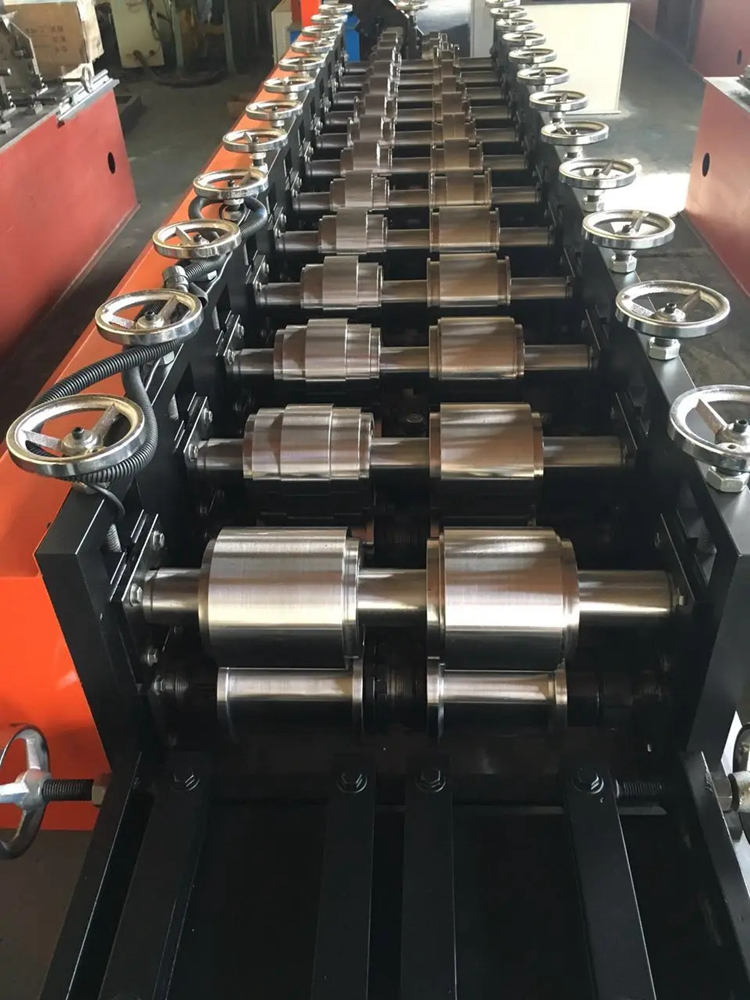
Steel Purlin Roll Forming Machine An Overview
Steel purlin roll forming machines are essential tools in the modern construction industry. These machines are specifically designed to produce purlins—horizontal structural members used to support roofs and walls in steel buildings. With the advancements in technology, the capabilities of these machines have expanded, allowing for increased efficiency, precision, and versatility in steel construction.
What is a Steel Purlin?
Before delving into the specifics of the roll forming machine, it is important to understand what a purlin is. Purlins are typically made from high-strength steel, and they play a crucial role in providing structural support to roofs and walls. They can be categorized into various types, including C-purlins, Z-purlins, and U-purlins, each serving different structural needs. The roll forming machine can produce these varying shapes by reforming flat steel sheets into desired profiles.
Working Principle of Steel Purlin Roll Forming Machines
The working principle of a steel purlin roll forming machine is relatively straightforward. The process begins with a coil of steel sheet fed into the machine. The machine, equipped with a series of rollers, gradually shapes the flat steel into a specific profile through a series of continuous bending and forming operations.
1. Feeding System The steel coil is unrolled and fed into the machine using a feeding system that ensures accurate alignment and consistent feed rates. 2. Roll Forming System A series of rollers, specifically designed for the profile, gradually shape the steel into the purlin form. Each roller performs a specific function in the formation process, ensuring precision and consistency. 3. Cutting System Once the desired length of purlin is achieved, an automated cutting system trims the profile to the specified size. This is often done with a hydraulic shear system for clean, accurate cuts. 4. Output Collection The finished purlins are then collected at the output end of the machine, ready for use in construction projects.
Advantages of Using Roll Forming Machines

One of the primary advantages of steel purlin roll forming machines is their efficiency. The automation of the roll forming process significantly reduces the time and labor required to produce steel purlins compared to traditional methods. Additionally, these machines offer a high degree of accuracy, ensuring that each purlin meets the specified dimensions and tolerances.
Furthermore, the versatility of these machines allows manufacturers to produce a wide range of purlin profiles and sizes, accommodating various construction needs. This adaptability can lead to cost savings, as companies can produce multiple products with a single machine.
Applications in Construction
Steel purlins are widely used in industrial and commercial construction projects. They can be found in warehouses, factories, and even residential buildings. Their lightweight yet robust nature makes them an ideal choice for supporting roof structures and wall systems.
Moreover, the use of cold-formed steel purlins contributes to sustainable building practices. The recyclable nature of steel aligns with eco-friendly initiatives, making it a preferred material in modern construction.
Conclusion
In conclusion, the steel purlin roll forming machine is a cornerstone of today's steel fabrication industry. Its advanced technology and versatility provide manufacturers with efficient means to produce structural components that meet the demands of contemporary construction. As the construction industry continues to evolve, the importance and application of these machines will undoubtedly grow, paving the way for innovative building solutions. By understanding their functionality and benefits, stakeholders can make informed choices that enhance productivity, reduce costs, and contribute to sustainable practices in building construction.